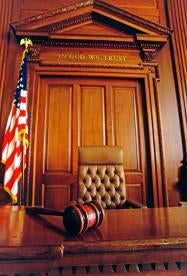Takeaway: In addressing claim construction, establishing prosecution history disclaimer may be decisive in avoiding the patentability challenges in a petition.
In its Final Written Decision, the Board found that Petitioner had not shown by a preponderance of the evidence that claims 38 and 40 of the ’414 patent are unpatentable. The ’414 patent relates to a system for supplying fuel to an assembly of fuel injections, which in turn supply fuel to an engine. Two Petitions were consolidated for decision and a related district court case was identified (TMC Fuel Injection System, LLC v. Ford Motor Co., No. 2:120-cv-004971-NS (E.D. Pa.)).
Petitioner challenged claims 38 and 40 of the ’414 patent on four grounds: (1) anticipation by Tuckey; (2) obviousness over Tuckey and Ford ’479; (3) obviousness over Tuckey and Chih; and (4) obviousness over Tuckey and Coleman.
The Board first addressed claim construction using the broadest reasonable construction in light of the specification. In construing the term “fuel return path with flow constraint,” the Board revisited its prior construction and, based on prosecution history disclaimer, excluded the use of a pressure regulator or incremental resistance valve. During prosecution, applicant amended the claims and stated that its system “eliminates most of the expensive, elaborate, and often slow acting and non-linear pressure control elements and their related elaborate systems shown in the references cited, and relied upon [by] the Examiner.” Applicant argued that “the use of a pressure regulator or a pressure relief valve was disadvantageous because ‘[t]he response time of a regulator in the regulating region is delayed, because time is needed to physically move the pressure-regulating element.’” Applicant then stated definitively: “The Application does not use pressure regulator or pressure relief valve.” This distinction was argued repeatedly, including in an appeal brief. The Board thus found disclaimer in view of “Applicant’s unequivocal statements during prosecution.” Moreover, this disclaimer was found to be “essential to allowance” and consistent with the specification, which discourages the use of variable valves. In construing the term “fuel recirculation,” the Board sided with Petitioner and did not adopt a construction because Patent Owner’s proposed construction would exclude the preferred embodiments of the ’414 patent specification.
The Board next turned to the patentability of the challenged claims that Petitioner must prove by a preponderance of the evidence. In light of the revised construction of a “fuel return path with flow constraint,” the Board agreed with Patent Owner that “Tuckey does not anticipate claims 38 and 40.” Similarly, Ford ’479 does not teach that limitation “in light of the express disclaimer.” Thus, Ford ’479 and Tuckey do not render claims 38 and 40 obvious. Regarding Tuckey in view of Chih, “Petitioner has provided insufficient reasoning as to why it would have been obvious to a person of ordinary skill in the art to modify the system of Chih to drive the pump at a constant speed”; “Petitioner has not identified the design need to modify Chih in this manner, other than by reference to the Specification of the ’414 patent.” Further, Petitioner did not address whether the result would be predictable upon substitution or “explained why it would have been obvious to make the speed of Chih’s pump constant without the accompanying features of Tuckey.” Thus, claims 38 and 40 were not obvious over Chih and Tuckey. Finally, Tuckey in view of Coleman did not render the challenged claims obvious because both references disclosed spring-ball valves, “which is inconsistent with the express disclaimer of pressure regulators and incremental regulation ‘of any type from the system.’” Thus, claims 38 and 40 were not obvious over Tuckey and Coleman.
Because none of the challenged claims were found unpatentable, the Board did not reach Patent Owner’s Motion to Amend. Finally, the Board denied Patent Owner’s Motion to Exclude certain exhibits because Patent Owner failed to object within five business days to the proffer of evidence as required by 37 C.F.R. § 42.64(b). However, the Board noted that the Decision did not rely on any of the disputed exhibits.
In a concurring opinion, Judge McNamara discussed further the prosecution history disclaimer. Judge McNamara stated that because “Patent Owner obtained allowance by arguing that the claims preclude valves of any type between the fuel pump and the fuel rail, and pressure regulators and incremental regulation means of any type from the system,” Patent Owner “cannot now retreat from the explicit disclaimer made in the prosecution that led to allowance of the claims.” Thus, the disclaimer is arguably broader—and the claims therefore narrower—than was necessary to render a final decision in this case.
Ford Motor Company v. TMC Fuel Injection System, LLC, IPR2014-00272, -00273
Paper 36: Final Written Decision
Dated: June 22, 2015
Patent: 7,318,414 B2
Before: Brian J, McNamara, Tina E. Hulse, and James A. Worth
Written by: Worth
Concurrence by: McNamara
Related Proceeding: TMC Fuel Injection System, LLC v. Ford Motor Co., No. 2:12-cv-04971-NS (E.D. Pa.)



 />i
/>i

